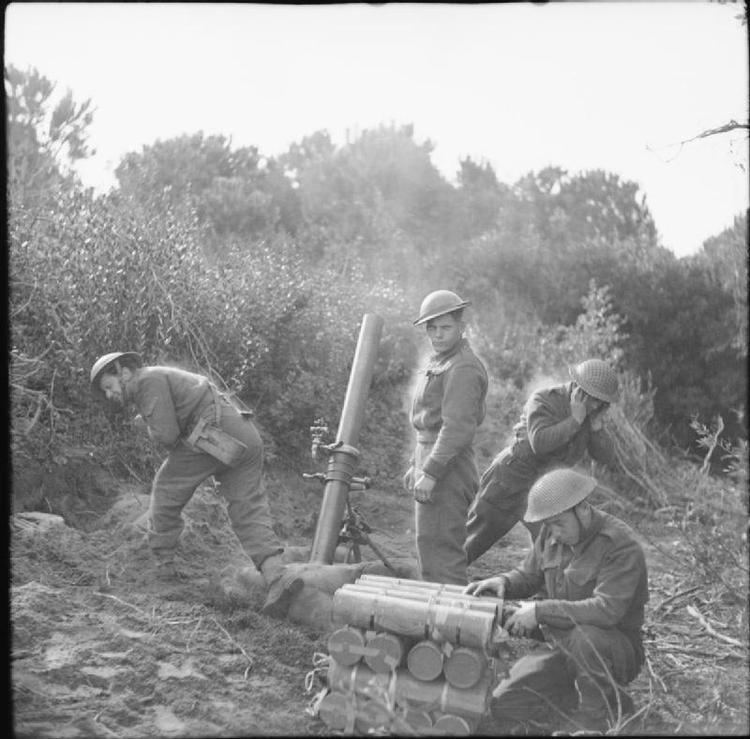Active 1914-2014 Part of Support Command | Country United Kingdom | |
 | ||
Type InfantryRegular and Territorial Army | ||
The 15th Infantry Brigade, later 15 (North East) Brigade, was an infantry brigade of the British Army. It was part of the regular 5th Infantry Division during the First World War and Second World War, and was subsequently part of the 2nd Infantry Division in the north of the United Kingdom, with specific responsibility for the areas of North East England and Yorkshire and the Humber.
Contents
Formation in Ireland
The 15th Infantry Brigade was first formed in 1905 at Fermoy and up to the outbreak of the First World War continued to serve in Ireland. The Brigade, which at that time consisted of 1st Battalion, Norfolk Regiment, 1st Battalion, Dorset Regiment, 1st Battalion, Cheshire Regiment and 2nd Battalion, Highland Light Infantry, was mobilized on 5 August 1914 and crossed to France as part of the British Expeditionary Force.
First World War
During the opening months of the War, the Brigade had its full share of fighting and saw action at Mons, Le Cateau, at the crossings of the Marne and Aisne and in the first battles in Flanders.
The Brigade has chosen Ypres, November 1914, as the Brigade Battle and there is an annual Brigade Dinner to celebrate it. The Brigade fought in all four battles of Ypres.
The Brigade distinguished itself in various battles. One of the most notable was the attack on Hill 60 near Ypres in 1915. Hill 60 was the highest point on what was known as the "Caterpillar Ridge" and as such was an excellent post for observation of the ground area around Zillebeke and Ypres. The 5th Division, composed of 13th, 14th and 15th brigades, had the task of securing Hill 60 and the ridge line. The Hill was taken between 17 and 19 April 1915, with heavy losses, and the subsequent German counterattack in early May was particularly ferocious. The Germans, unable to obtain victory, eventually resorted to the use of chlorine gas and Brigade casualties during the first week in May 1915 were 33 officers and 1,553 men. However, the line was held until reliefs were brought forward and the Brigade withdrawn.
The last battle of the Great War in November 1918 found 15th Brigade in the forefront of the advance, east of the River Sambre.
Order of Battle
The Inter-War Years
Following the war the 15th Brigade returned to Belfast where it commanded 1st Battalion, Dorsetshire Regiment, 1st Battalion, Somerset Light Infantry, 1st Durham Light Infantry and 1st Battalion, King's Royal Rifle Corps. In 1924 the 15th Brigade moved to Germany as part of the British Army of the Rhine and was renamed 1st Rhine Brigade. The Brigade was reformed, as 15th Infantry Brigade in October.
World War II
The brigade was formed from regular units on the outbreak of war on 3 September 1939. When the 5th Division was sent to France late 1939, the 15th Brigade was sent instead in May to Norway, as part of Sickleforce to participate in the unsuccessful Norwegian Campaign, under the command of Lieutenant-General H.R.S.Massey. The brigade was reunited with the 5th Division on 3 August.
The Brigade served with this formation for the rest of the war, seeing action in the Allied invasion of Sicily in July 1943 and Italian Campaign later in the year. After participating in the later stages of the Battle of Anzio, the brigade was deployed to garrison duties in the Middle East before being transferred to North-western Europe on 3 March 1945. The brigade was disbanded in Hanover on 31 March 1948.
Order of Battle
Commanders during World War II
Reformation
The Brigade was reformed in 1982, as a Territorial Army formation, which in turn was part of the 2nd Infantry Division. The Brigade's Headquarters were at Alanbrooke Barracks and its first commander in this new role was Brigadier Michael Aris. Its organisation and role were tested in Exercise Keystone in 1983, when it consisted of:
In 1999, having been a territorial formation for many years, the brigade was made responsible for both regular and territorial units in the North East, when the Second Division became a "Regenerative Division", responsible for the north of England and Scotland.
This brigade was not listed as any of the 11 Brigades under Army 2020. Instead, on 1 December 2014 it merged with the former 4th Mechanised Brigade to form an infantry brigade known as 4th Infantry Brigade and Headquarters North East based in Catterick.
Role and Structure
15th (North East) Brigade was a Regional Brigade responsible for the recruiting of soldiers and Officers for the Regular and Territorial Army. It trained the Territorial Army for operations, provided a command and control focus for all military support to civilian authorities during civil emergencies e.g. flooding and was responsible for providing the "Firm Base" to the Regular Army within its area. The brigade had its Headquarters at Imphal Barracks in York and included the following units:
